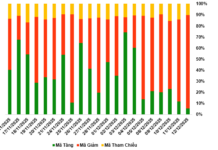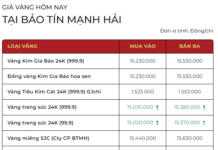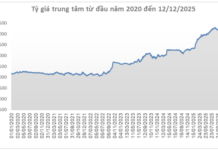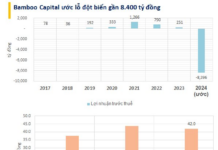Young people are hesitant to marry and reluctant to have children
According to data published by the General Statistics Office of Vietnam (GSO), over the past 30 years, there have been significant changes in marriage and birth rates in the country. The average age of first marriage has increased, and the marriage rate has decreased, leading to a halving of the birth rate over the same period.
Specifically, from 1989 to 2023, the average age of first marriage for men increased from 24.4 to 29.3, and for women, it rose from 23.2 to 25.1. Additionally, there has been a growing trend of singles, with the proportion of unmarried people increasing from 6.23% in 2004 to 10.1% in 2019.
The preference for having no children or only one child is becoming more prevalent in urban areas, especially in large cities like Hanoi and Ho Chi Minh City. The birth rate has also declined noticeably, from 3.8 children per woman in 1989 to below 2 in 2023. In the period between 2013 and 2023, Vietnam’s population grew by only about 1 million people per year.
Notably, in Ho Chi Minh City, the average age of first marriage was 30.4 as of July 2023, according to GSO statistics, setting a record high for the country. The average number of children per woman of childbearing age in the city is 1.32.
This trend is not unique to Vietnam; a growing number of people are choosing to marry later or remain single, especially in developing countries. According to the World Bank, 89 out of 189 countries and territories worldwide currently have a total fertility rate below the replacement level of 2.1 children per woman, compared to only 8 countries 50 years ago. The average age of first marriage is also rising in other countries, such as Japan (34), Italy (34), France (32.9), Norway (33.1), and Germany (32.8).
Additionally, the DINK (Double Income, No Kids) lifestyle is becoming increasingly popular in Asia. Beyond personal preferences for freedom and a lack of commitment, financial constraints play a significant role in this choice. According to realtor.com, buying a house costs only about 50% more per month than raising a child.
Hesitancy to marry, reluctance to have children, and housing prices
VARS attributes these choices mainly to financial considerations. A recent quick survey on the VTV24 fanpage found that 62% of nearly 400,000 young respondents preferred to marry after the age of 30 due to financial concerns.
According to VARS, housing prices have a significant impact on this decision. As housing prices continue to rise, so do rental costs, putting pressure on people’s living expenses. Many young people feel the need to buy a house before getting married or having children, but with the current surge in real estate prices, it is not easy to become a homeowner. This leads to a dedication to working long hours to be able to afford a house, often at the expense of timely family planning.
Monthly rental and living expenses consume a large portion of young couples’ income, leading them to either have only one child or postpone having children altogether. Ho Chi Minh City, which has the highest housing prices in the country, also has the latest average age of first marriage and the lowest birth rate.
From 2016 to 2018, housing prices in Ho Chi Minh City continuously reached new highs, and during this period, the city also had the highest cost of living index in the country. Since 2019, while Ho Chi Minh City’s housing market has slowed down, Hanoi’s real estate prices have been on the rise. Hanoi has now become the most expensive city in Vietnam. The current situation in Hanoi’s housing market resembles that of Ho Chi Minh City five years ago, with average prices reaching 60 million VND per square meter.
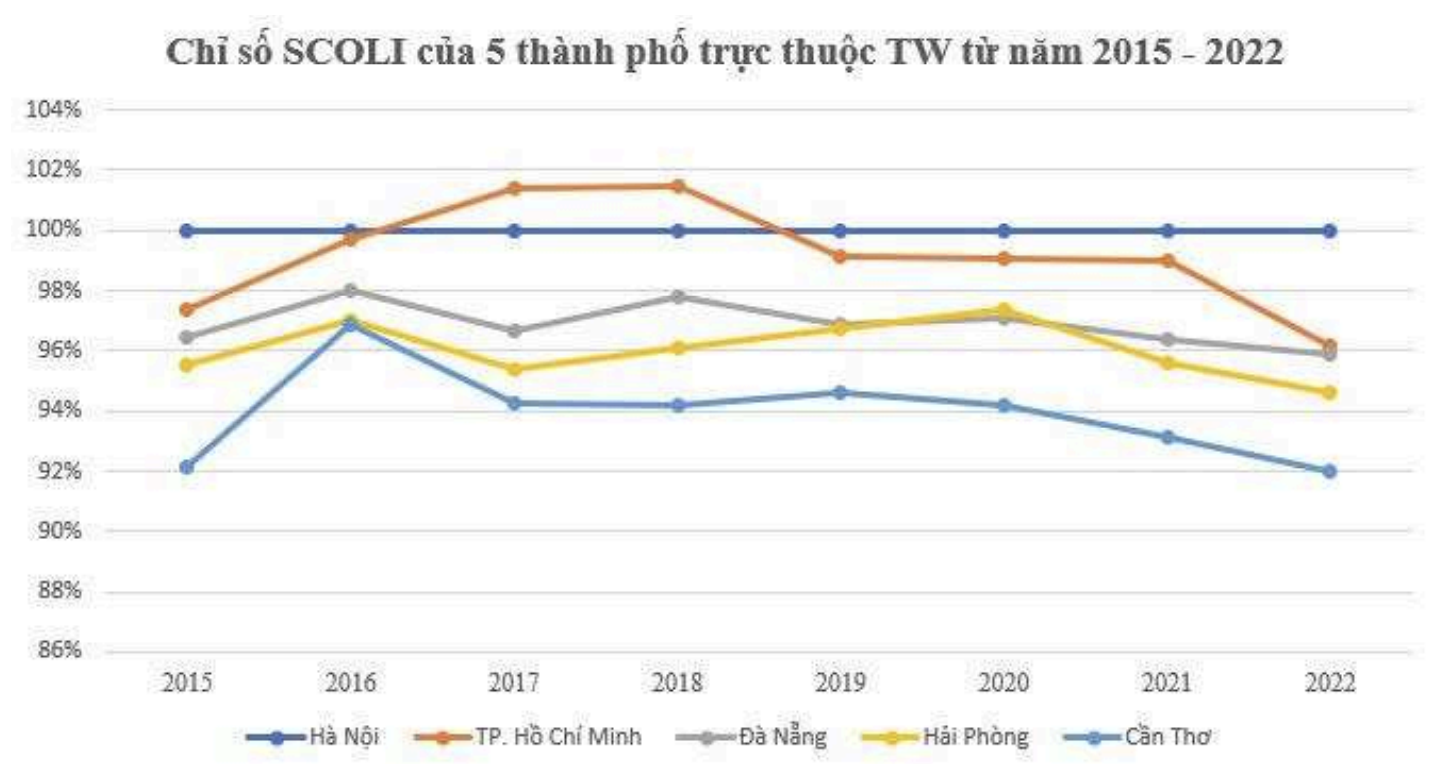
The hesitancy to marry and reluctance to have children lead to a shortage of young labor, a decrease in workforce productivity, and an increase in social welfare burdens. With an aging population and the need for elderly care, Vietnam is expected to have over 30 million elderly people in the next three decades, accounting for about 25% of the total population. As in developed countries, the trend of older people moving into retirement homes will likely increase, presenting opportunities for investors to develop the retirement real estate segment, which is still in its infancy.
To address the current situation, developed countries have implemented various measures to encourage young people to marry and have children. In addition to welfare policies, most of these measures involve cash grants for renting or buying a home.
For instance, in Japan, newlywed couples receive a grant of 600,000 yen (over 130 million VND) to cover the costs of renting or buying a new home, including deposits, key money, service fees, brokerage fees, moving costs, and fees for moving companies.
In Busan, South Korea, newly married couples receive 30 million won (approximately 550 million VND) as a down payment for buying a house or 800,000 won (over 14 million VND) per month in rent subsidies for five years.
Singapore, which has the highest housing prices in Asia, offers housing grants of up to 80,000 SGD (approximately 1.5 billion VND) to young couples. First-time homebuyer couples or families with children are given priority for new housing.
Despite these efforts, the marriage and birth rates in these countries have improved very slowly. In Vietnam, the measures to encourage marriage before the age of 30 and promote childbirth remain vague and are unlikely to be as effective as expected.
Therefore, VARS suggests that to encourage marriage before the age of 30 and increase the birth rate, the government should decisively implement existing measures and develop more explicit policies. This includes prioritizing one-time social housing support for couples who have had two children and addressing the root cause of the issue, which is the challenge of affordable housing.

To address the housing needs of the majority of the population, in addition to increasing the supply of social housing in urban areas, the state needs to explore policies to intervene in the development of affordable commercial housing.
In the first half of 2024, there were no new affordable commercial housing projects in the two special municipalities of Hanoi and Ho Chi Minh City. More than 80% of the new apartment supply in these cities belonged to the luxury segment (>50 million VND/m2).
Given the limited land resources, complex policies and laws, lengthy administrative procedures, and rising input costs, developers opt for luxury projects to maximize profits. While this segment does not represent the needs of the majority, there is significant demand for luxury housing, both for owner-occupiers and investors, as evidenced by the high absorption rates of these projects despite their “ordinary” locations.
Affordable commercial housing projects will be developed by enterprises based on reasonable profit margins controlled by the state.
At the same time, state management agencies should continue to reform administrative procedures and combat corruption and negative behaviors to eliminate “unofficial costs” in project development, making housing prices more reasonable.
To ensure a transparent, healthy, stable, and sustainable market development, large enterprises and projects should set appropriate selling prices and sales policies in line with investment costs.
Beyond the negative impacts, the trend of hesitancy to marry and reluctance to have children also creates new demands in the real estate market. In recent years, there has been an increasing demand for one-bedroom and one-bedroom-plus apartments, catering to singles, young couples, or those with one child. These apartments have high liquidity and are often accompanied by attractive pre-payment policies and long-term payment terms, given the continuous rise in apartment prices.
Additionally, with the aging population, the trend of older people moving into retirement homes will likely increase, as seen in developed countries. This presents opportunities for investors to develop the retirement real estate segment, which is still in its infancy in Vietnam.




